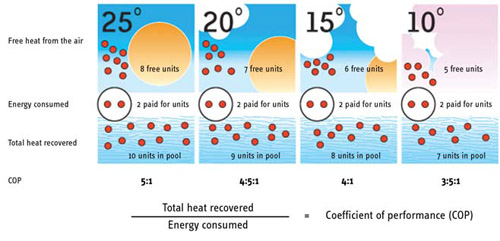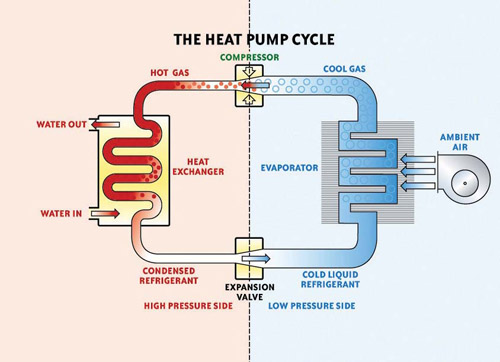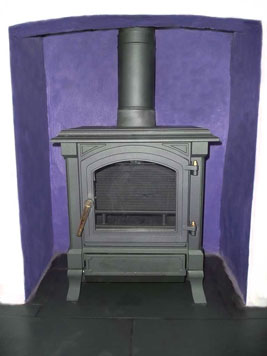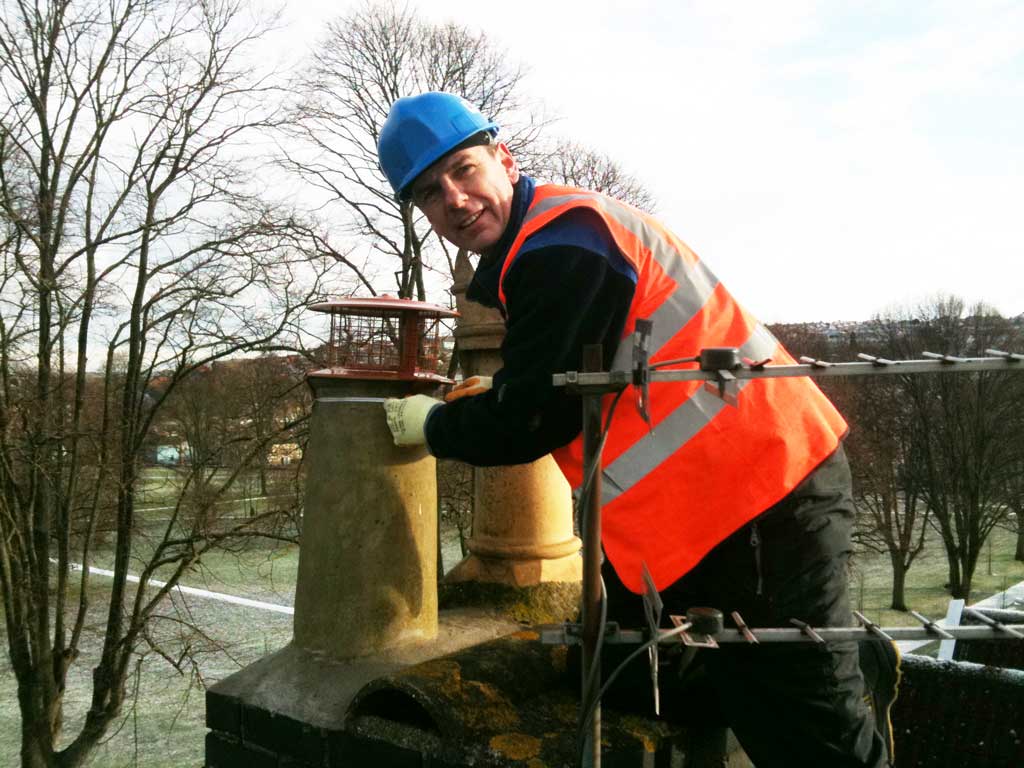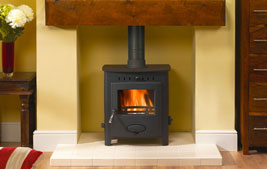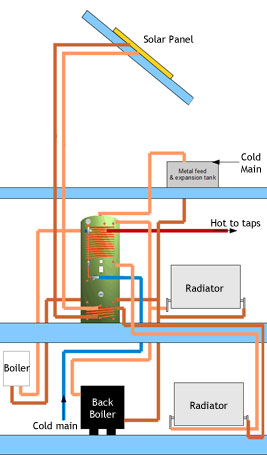
Underfloor Heating
How It Works
Underfloor heating works through warm water pumped through pipes laid in the floor of the room. Much lower water temperatures are required as the large surface area of the floor is enough to warm the room efficiently as the heat rises. An underfloor heating system will generally run at around 35 degrees as opposed to 70 degrees used in radiator systems, which means that there are energy and running cost savings, especially when used with renewable heat sources such as heat pumps.
Why Use Underfloor Heating?
There are a huge number of benefits to using an underfloor heating system, here are just a few of them:
- Comfort – A correctly designed and installed system runs efficiently and supports the bodys natural requirements for warm feet and cool head. The heat is uniformly rising from the floor, rather than having warm pockets around radiators
- Aesthetics – Underfloor heating creates complete freedom of interior design with no radiators to worry about, you can use every square inch of space can be used for room layouts
- Silence – Underfloor Heating is virtually silent when running
- Low Maintenance – No need for manual operations, such as bleeding or painting radiators
- Cost effective – Lower water temperature means lower energy, means lower heating bills
- Individual room control – Rooms are heated on an individual basis – for example the bedroom can be at a different temperature from the living room
- Healthy living – Slower moving air particulates makes underfloor heating the system of choice for asthmatics. Floors dry quicker after cleaning, reducing slip hazard. Underfloor heating also eliminates the risk of contact burns and collision damage from radiators
- Environment – lower fuel usage means lower CO2 emissions, better for the environment
Construction
1 World Solar can install underfloor heating using a wide range of floor constructions including:
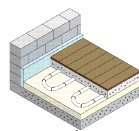
Solid Floors
The Underfloor Heating pipes are laid onto insulation board placed over a solid concrete base. Screed is then poured over the top of the pipes. This construction is typically used on ground floors or beam and block floors.
Suspended Floors
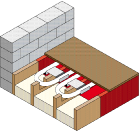
Manifold System
A bubble aluminium foil laps up and over the joists to create a sealed air void. The aluminium foil reflects the radiant heat up to the underside of the floor, which in turn heats the room.
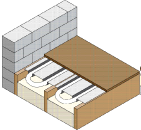
Aluminium Heat Emission Plates
These are supported by the joists (400mm c/c). The plates are grooved so that the underfloor heating pipework can be fitted. The plates diffuse the heat for even heat distribution across the floor.
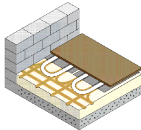
Floating Floors
We can supplies a range of polystyrene panels in various density grades. The panels range from 30mm to 100mm depending on the solution required. The panels are pre-routed so that heat emission plates can be laid directly into the panels. Once this is complete the pipework can be installed into the plates. A floating floor is then laid over the top of the system.

Swimming Pool Heating: Solar Thermal or a Heat Pump? Bristol and surrounding area only.
1 World Solar offer both solar thermal heating and heat pump green heating solutions for swimming pools. Both of these options save significantly on running costs (especially against oil heating) and carbon emissions, whether your pool is indoor or outdoors. Alternatively you may have an unheated outdoor pool and simply want to extend the swimming season by a few months. Either way we can offer a full design service and competitive quote, so please get in touch with us. We're based in Bristol and can cover the area about a one hour drive around Bristol i.e. not national coverage, which is a shame because before I added this line, we received quite a few distant enquiries that we couldn't cover! Google Solar Trade Association to find installers in your area.
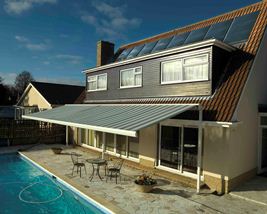
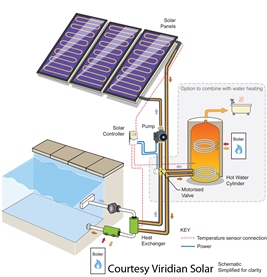
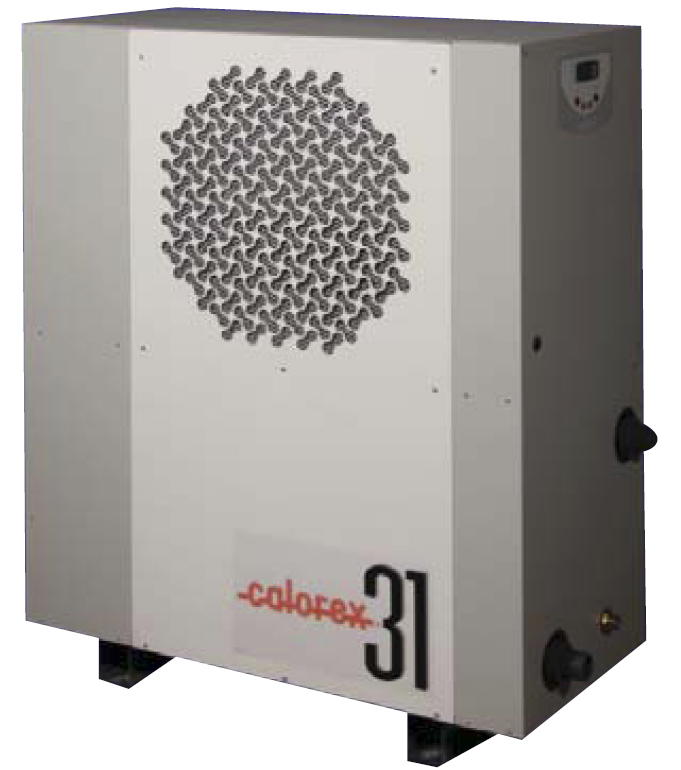

Solar Thermal Heated Swimming Pools
Why should we only appreciate outdoor pools for the two warmest months of summer when it is possible to extend this pleasure and reduce running costs by using solar thermal heating? Or how can we enjoy an indoor pool all year round with lower fuel bills?
Fortunately heating a swimming pool by solar energy is an ideal application for solar thermal heating, because of the large volumes and low temperature of water in a pool. Whereas domestic hot water typically requires a temperature of 60C, a swimming pool is comfortable at 28C such that the solar collectors are operating extremely efficiently at all times. The only fuel cost for the solar thermal system is for a small circulating pump.
There are a number of system options, including unglazed direct collectors, which often comprise of rubber or plastic mats. Whilst we can provide this type of system we specialise in high efficiency glazed solar collectors which input their heat indirectly via a heat exchanger in the pool circulation system, as shown in the diagram opposite. With this type of collector the swimming season can be extended even longer in an outdoor pool whilst significant solar contribution can be made all year round for a heated indoor pool.
The other advantage of glazed solar thermal collectors is that they can also produce hot water, for swimming pool showers or for the home itself if adjacent. This is especially attractive for pools which are used seasonally, as the entire power of the solar collectors can be directed solely at the domestic hot water heating, producing a high solar fraction even in winter.
In terms of the size of solar collectors required then 50% of pool area is typical in order to displace about 50% of the boiler fuel use, in an indoor pool. However all pools must have a good insulated pool cover fitted for solar to be effective. Our design service would include T-Sol modelling of the proposed design which would provide a more accurate bespoke estimate.

1. Swimming pool heat pump
2. Remote control
3. Pure water to the pool
4. Circulating pump
5. Bypass and regulator valves
6. Pipe water from the pool
7. Filter
Heat Pumps for Swimming Pools
Controlling the temperature of water is essential to ensure the pleasure of swimming and a heat pump is an ideal way to provide all year round economical heating for indoor swimming pools. This may be as a standalone or in conjunction with solar heating.
Our approved heat pump solution is from Calorex, an established UK company, who have a wide range of heat pumps designed specifically for swimming pool heating. These heat pumps are specifically designed for swimming pool heating and this means that all components used in their construction are designed to give maximum efficiency at swimming pool conditions and will give years of trouble free service.
The main advantages of a heat pump
- 74% less emissions than an oil boiler
- Low operating cost
- Designed and built especially for swimming pools
- Water heated to 35°C if required
- Simple installation
- Long lifespan
- Suitable for swimming pools in operation throughout the year
- Minimum maintenance
Why choose a heat pump
The heat pump is now recognised as one of the most economical and environmentally friendly methods of dynamically heating a swimming pool. Its principle allows heating of your swimming pool water by enhancing the free and natural energy in the air to a usable form of heat whilst respecting the environment. By careful design a heat pump is capable of providing your pool with up to five units of absorbed heat for every one unit paid for.


Hot Water Cylinders
All solar water heating systems require a cylinder of some sort to store the energy they collect. We have a wide range of off-the-shelf and custom cylinders available from manufacturers we have come to trust over the years.

Wood burning and multi-fuel stoves
1 World Solar supply and install a range of high efficiency wood burning and multi-fuel stoves.
We particularly like wood burning stoves, as burning wood is a CO2 neutral process, which means that no additional CO2 is given off to add to global warming. The CO2 captured in the wood is simply released again, so the wood gives off the same amount of CO2 as if it were decomposing on the forest floor.

